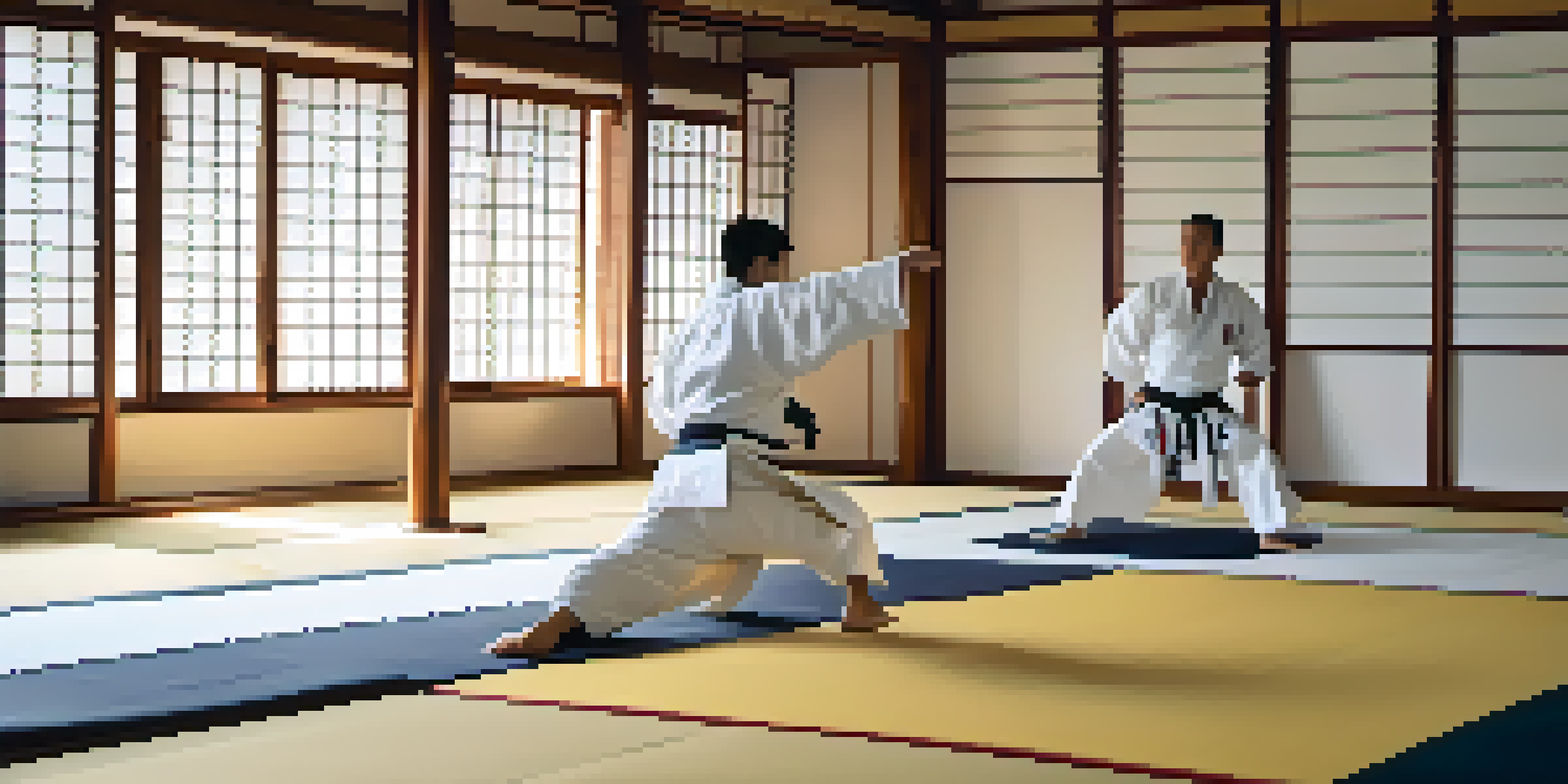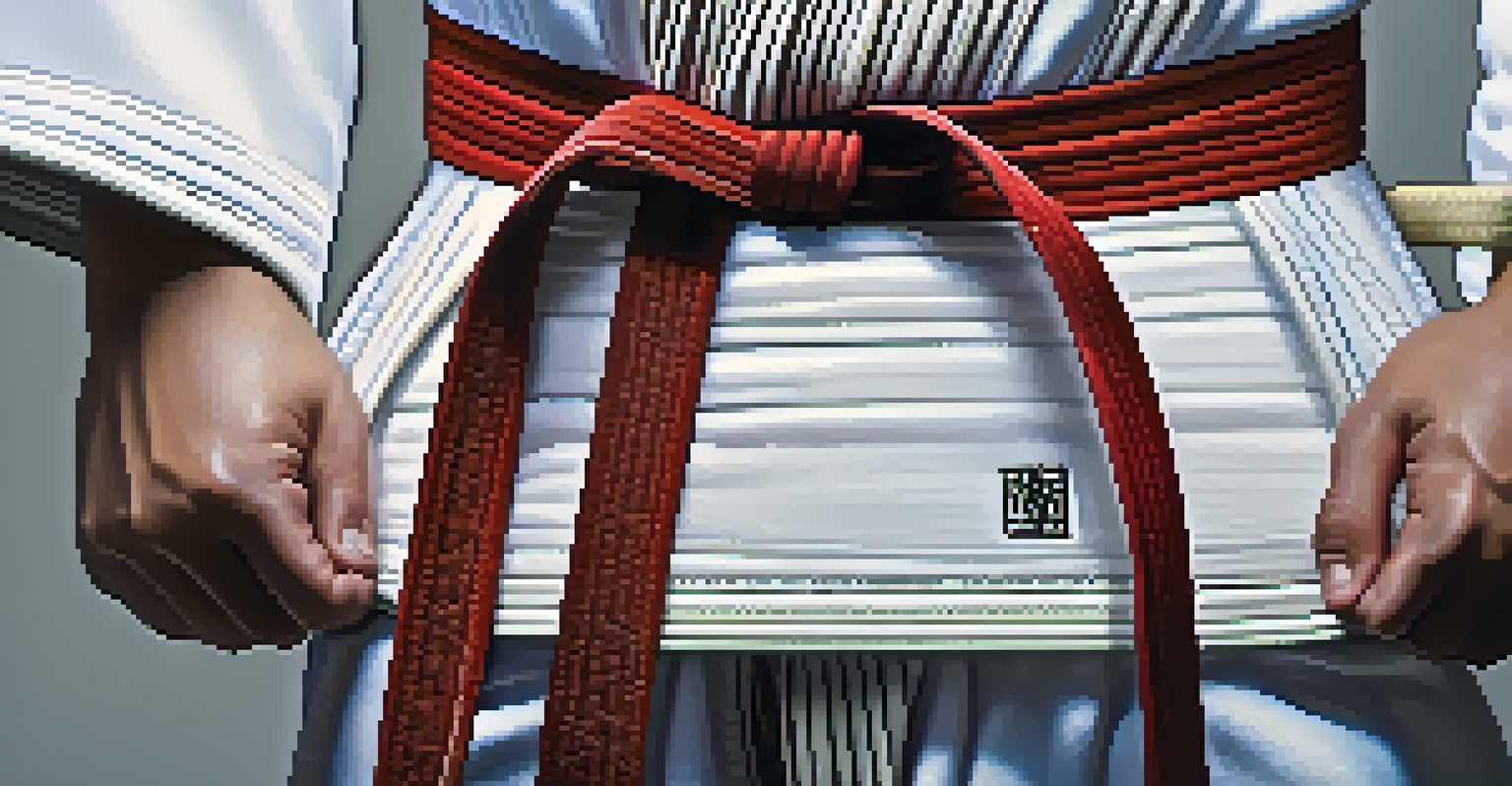The Influence of Jigoro Kano on Judo's Evolution and Growth

Introduction to Jigoro Kano and His Vision for Judo
Jigoro Kano, born in 1860 in Japan, was not just a martial artist; he was a visionary who laid the foundation for modern judo. His journey in martial arts began with jiu-jitsu, which he transformed into a more structured and educational form, emphasizing the philosophy behind the practice. Kano believed that judo was not just about physical prowess but also about personal development and moral education.
Judo is the way to the most effective use of both physical and spiritual strength.
He established judo in 1882 by founding the Kodokan, which became the first judo school. This institution was a place where students could not only learn techniques but also the principles of mutual respect and cooperation. Kano's approach to judo was revolutionary, as he aimed to create a discipline that promoted both physical fitness and character building.
Kano's vision extended beyond the dojo; he wanted judo to contribute to society. He saw it as a means of fostering international friendship and peace, which would later play a significant role in judo's global appeal. This foundational philosophy continues to resonate within the judo community today.
Kano's Principles: Maximum Efficiency and Mutual Benefit
One of the core principles introduced by Kano is the concept of 'Seiryoku Zenyo,' or maximum efficiency with minimum effort. This principle emphasizes the importance of using an opponent's force against them, which not only makes judo effective but also accessible to practitioners of all sizes and strengths. It encourages judokas to think strategically rather than relying solely on brute strength.

Kano also championed the idea of 'Jita Kyoei,' meaning mutual benefit and welfare, which underscores the importance of respect and support among practitioners. This notion fosters a sense of community within judo, where everyone learns from each other, regardless of skill level. It’s a reminder that judo is as much about personal growth as it is about competition.
Kano's Vision for Judo's Growth
Jigoro Kano envisioned judo as a means for personal development and international friendship, establishing a global community around the sport.
These principles have become integral to judo’s identity and have influenced countless martial arts and self-defense systems around the world. By prioritizing efficiency and cooperation, Kano ensured that judo would appeal to a diverse audience, paving the way for its global expansion.
Kano's Role in Internationalizing Judo
Kano was not content to keep judo confined to Japan; he actively sought opportunities to introduce the art to the world. His first major international effort came in 1889 when he visited the United States and demonstrated judo to a captivated audience. This was a bold move that showcased his commitment to making judo a global phenomenon.
The ultimate aim of Judo lies not in defeating an opponent but in the perfection of one’s own character.
In 1900, Kano attended the World’s Fair in Paris, where he gained further recognition and connected with international sporting communities. These early introductions helped judo transition from a national pastime to an international sport. Kano's efforts laid the groundwork for judo competitions and exhibitions that would follow in various countries.
By establishing relationships with various countries and promoting judo as an educational tool, Kano fostered a spirit of international camaraderie. This openness to global engagement has played a crucial role in judo’s growth, transforming it into a sport that unites people across borders.
The Formation of Judo Associations and Competitions
Under Kano's guidance, the Kodokan became the central hub for judo training and innovation. As judo grew in popularity, various national associations began to form, which helped standardize rules and promote competitions. This organizational structure was vital for judo to evolve into a competitive sport, allowing practitioners to test their skills on a larger stage.
Kano recognized the importance of competitions in developing a sport's profile. He encouraged the establishment of events that would showcase the skills of judokas and increase public interest. These competitions ranged from local tournaments to international championships, which drew participants from around the globe.
Core Principles of Judo
Kano introduced key principles like 'Seiryoku Zenyo' and 'Jita Kyoei,' emphasizing efficiency and mutual benefit, which continue to shape judo's identity.
The introduction of formal competitions helped to elevate judo's status worldwide. It not only provided a platform for athletes to demonstrate their skills but also attracted spectators who would become lifelong fans of the sport. This competitive spirit, rooted in Kano's vision, continues to thrive in judo today.
Kano's Influence on Judo Education and Training
Kano's impact on judo extended deeply into education and training methodologies. He introduced a structured curriculum that emphasized both technical proficiency and philosophical understanding. This holistic approach ensures that judokas are not only skilled in techniques but also embody the values of respect and discipline.
The training methods developed by Kano included a focus on randori (free practice) and kata (pre-arranged forms), both essential for mastering judo. By blending these techniques, he provided students with comprehensive learning experiences that catered to various learning styles. This adaptability has made judo accessible to people of all ages and backgrounds.
Furthermore, Kano's emphasis on education led to the establishment of judo as a subject in schools and universities. This academic recognition has contributed to the sport's legitimacy and has encouraged more individuals to take up judo, further expanding its reach and influence.
Judo's Evolution in the Global Sports Landscape
As judo gained popularity, it began to carve out a significant place in the global sports landscape. The International Judo Federation (IJF) was established in 1951, which helped standardize rules and promote the sport on an international level. This formal organization has played a crucial role in judo's growth, overseeing competitions and fostering unity among member countries.
Judo's inclusion in the Olympic Games in 1964 marked a pivotal moment in its evolution. It not only elevated the sport's status but also introduced it to a wider audience, capturing the interest of millions around the world. This exposure has been instrumental in attracting new practitioners and fans alike, propelling judo into the limelight.
Judo's Global Expansion
Kano's efforts in internationalizing judo and establishing competitions laid the foundation for its status as a beloved sport worldwide.
Today, judo is practiced in over 200 countries, with millions of practitioners worldwide. Kano's vision and tireless efforts have ensured that judo remains not only a sport but also a way of life for many, promoting values of respect, discipline, and friendship across cultures.
Legacy of Jigoro Kano in Modern Judo Practice
Kano's legacy is deeply embedded in the practice of judo today. His philosophies continue to guide instructors and practitioners, ensuring that the core values of judo are passed down through generations. This commitment to Kano's ideals has helped maintain the integrity and spirit of the sport, even as it evolves.
Modern judo still reflects Kano's principles of mutual respect and maximum efficiency. These values resonate in dojos around the world, fostering a community where individuals support each other's growth. This sense of belonging is one of the many reasons why judo remains so appealing to newcomers.

As judo continues to grow and adapt, the essence of Kano's teachings will remain at the heart of the sport. His influence is not just seen in techniques or competitions but in the enduring relationships and friendships that judo fosters, showcasing the true spirit of this martial art.